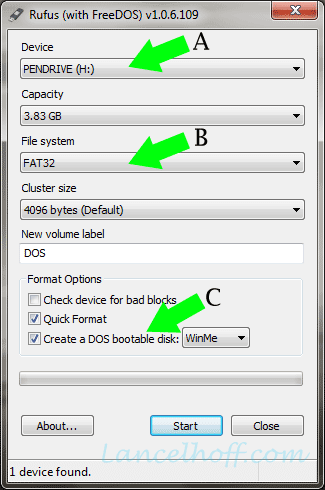How To Format Bootable Usb For Mac Osx On Linux Pc
Click the “Erase” button after selecting the entire drive to erase the entire drive and create a single partition on it. You’ll be asked to provide a name for the disk, which will appear and identify the disk when you connect it to a Mac, PC, or another device. You’ll need to choose between several file systems: RELATED: • OS X Extended (Journaled): This is the default, but it’s only natively supported on Macs. It’s also known as HFS+. This file system is necessary if you plan on using the drive for Time Machine backups–otherwise, you’ll want to use exFAT for maximum compatibility. • OS X Extended (Case-sensitive, Journaled): On a case-sensitive file system, “file” is different from “File”. By default, Mac OS X doesn’t use a case-sensitive file system.

What is the best photo editor for mac. Instead of disk2s1, type your identifier.
While it's pretty impressive that a can handle an entire operating system, it won't help you get your computer up and running. In this guide, I'm going to show you how to create a USB drive that contains all of the necessary files to boot your Windows PC or Mac into Ubuntu. To create this bootable USB drive, also known as a live USB, you will need access to a USB drive with at least 2 GB of storage and a functioning computer, but it does not matter if it is a Mac or Windows. In addition, you will also need a copy of the latest version of Ubuntu, which can be downloaded from. Installation for Windows Users If you have access to a Windows machine, the process of creating a live USB is extremely easy. What is best format for flash drives. All you have to do is download the from.
How To Format Bootable Usb For Mac Osx On Linux Pc Games
Why would you want to do that? Two reasons: to see how the other half lives, so to speak, and to create a rescue tool that can work around nearly any Windows-related disaster. For example, I recently spent days troubleshooting a relative's malware-infested, effectively non-operational laptop. Driver identifier for mac.
Advertising revenue that helps to pay bills is falling fast. And unlike many other sites, here there is not a paywall or anything blocking readers from accessing the site. So you can see why your help is needed. If everyone who reads this site, who likes it, helps to support it, the future would be much more secure.
Screen recorder for mac free with audio. Within a terminal goto the directory where the CentOS 7 ISO is located and type the following command. There are currently 4 responses to “How to Create Bootable USB Key CentOS 7” Why not let us know what you think by adding your own comment!
Unfortunately, Mac OS X does not have a tool like Universal USB Installer to create a live USB, but as a Mac user, you should be used to that feeling by now and know that it isn't a big deal. Instead of using a traditional app, we will use Terminal.
With the advances in technology, faster data access (SSD), and slimming hardware footprints, legacy technologies are typically the first cuts made to get these devices thinner and lighter while making them more powerful and efficient. Installing OS X has never really been a particularly difficult task, but try doing that on a MacBook Air or a system with a broken optical drive. Not so easy anymore is it? Even downloading the OS from the Mac App Store wouldn't do when the hard drive needs replacing or the Recovery Partition is corrupt. Luckily, Macs have a couple of options, specifically USB booting, and since most have an SD card slot, we can use those as well. Creating a USB Installer for Apple OS X 10.7-10.8 Before proceeding, we'll need the following items to complete the process: • 8GB USB Flash Drive (or SD Card) • Install OS X Mountain Lion.app (installer downloaded from Mac App Store) • Apple computer with Mac App Store (OS X 10.6.8+) • User Account with Administrative privileges Follow these steps: 1.
There’s a reason Ubuntu recommends just burning a disc. Should allow you to boot those USB drives if you install it on your Mac. But you don’t have to install this alternative UEFI boot manager on your Mac. The solution below should allow you to create Linux live USB drives that will boot on modern Macs without any additional fiddling or anything extra — insert, reboot, and go. Use Mac Linux USB Loader RELATED: A tool named “” by SevenBits worked well for us.
Alternatively, you can just hold down the C button while starting up to boot directly into the USB drive. Troubleshooting Tips If the installation of Yosemite freezes, it's probably because your USB drive is corrupted in some way. This happened to me on the first couple tries, where it would freeze at 5 minutes left. The third USB stick I used was successful, and it took less than 15 minutes for Yosemite to boot up. If you're getting an Undefined error: 0 warning when trying to install, this more than likely means that you forgot to perform Step 6 above, so make sure to copy over those two BaseSystem files. If you got the 'AppleEvent timed out' error using DiskMaker X, more than likely it'll still work. Just eject the new drive and use it.





